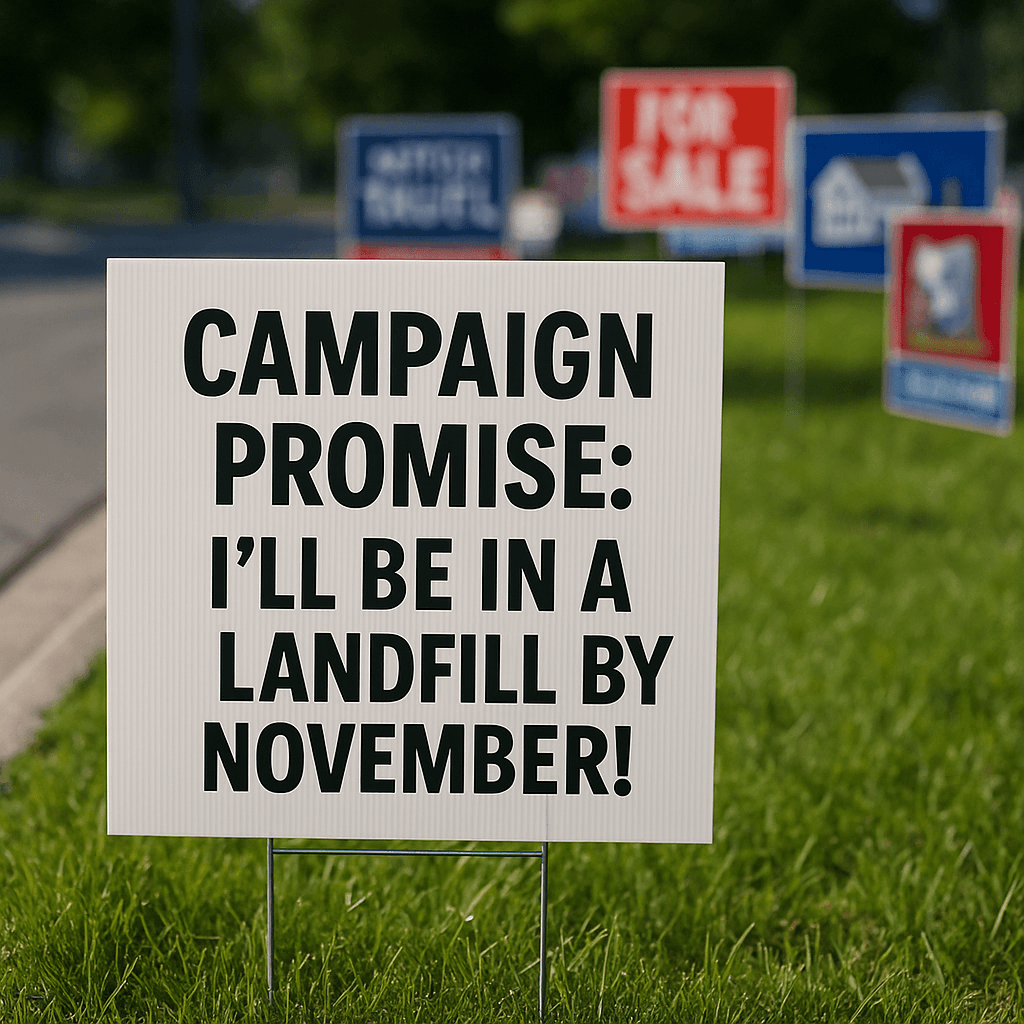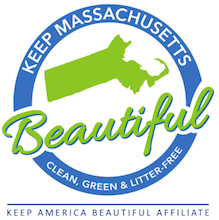
You’ve seen them everywhere: plastic business and political signs crowding roadsides and intersections, real estate advertisements zip-tied to telephone poles, and the notorious “We Buy Ugly Houses” signs.
They appear overnight and often stay for weeks, months, or until they fall apart or are blown away, becoming one more piece of plastic waste littering our environment.
From Message to Mess
Temporary signage—especially the ubiquitous plastic-coated yard signs from companies like 1-800-GOT-JUNK or College Hunks Movers—may seem harmless by offering a way to promote a local business, show support for a candidate, or spread a message. But these signs raise three important questions:
- Should businesses, political candidates, and even nonprofits be allowed to mar our landscape, including rural roadsides, by placing these signs on public property?
- For those towns and cities that allow signs to be placed on public property, is there a time limit?
- Who is responsible for removing these signs once they have outlived their purpose or if they violate local bylaws?
Why do these questions matter? Because our public spaces should be clean, safe, and welcoming rather than littered with plastic signs.
In a presidential election year, 1 to 5 million yard signs are printed across the U.S. These signs typically consist of two components: metal stakes and corrugated plastic boards. These materials typically cannot be recycled in municipal recycling programs and require specialized recycling collection sites. Metal stakes can often be recycled with scrap metal, but it's best to check with your local recycling center or transfer station for specific instructions.
This is not just an environmental issue—it’s a legal one, too. Many towns and cities have bylaws that limit sign posting on public property.
According to the American Civil Liberties Union, “for ordinances regulating speech on public property, like parks or public areas between sidewalks and streets, signs may be prohibited or removed if there is a law that applies to all signs regardless of what they say, and if that law is supported by the government’s interest, for instance, in promoting traffic safety or keeping the space visually appealing.” However, the general principle is that if a municipality allows some signs in a public area, it must allow all signs in that area. Yet even in towns and cities that ban all signs, it appears that these rules are often not enforced.
So, Who’s Responsible?
The truth is: we all are. Political campaigns, local businesses, and residents often don’t think twice about placing signs in public spaces. But if we care about our communities and the environment, we need to do better.
You Can Make a Difference
- Contact your local officials. Ask your Select Board, City Council, or mayor if your town or city has a bylaw regulating yard signs or signage in the public right-of-way. If the answer is yes, ask who is responsible for enforcing the law.
- Host a yard sign cleanup. Organize a neighborhood sign sweep to remove old or illegally placed signs.
- Repurpose your yard signs: Very few yard signs are recyclable, so they should be placed in the trash, or consider repurposing them for other uses.
It’s Time to Clean Up Our Act
Our streets and green spaces shouldn’t serve as free billboards for businesses and political candidates. Every sign you see on a roadside, telephone pole, or traffic island is a reminder that we need stronger regulations, better enforcement, and a cultural shift toward cleaner public spaces.
Let’s stop treating our towns and cities like bulletin boards and start holding businesses (and our elected leaders) accountable.
Contact your local officials today and ask: Why are we allowing this?

